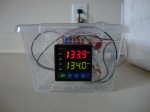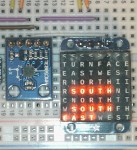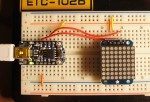 My love of gadgets is, I think, already well-established on these pages. I love food just as well, so it was probably inevitable that I’d decide to take some food and Do Science to It. And takes pictures of myself doing it. And put up a blog post about it.
My love of gadgets is, I think, already well-established on these pages. I love food just as well, so it was probably inevitable that I’d decide to take some food and Do Science to It. And takes pictures of myself doing it. And put up a blog post about it.
Say you want a steak cooked perfectly, edge to edge. That means bringing the internal temperature of the entire thing to exactly the right point. It’s hard to do with a grill or a pan or a broiler, since those heat the outside more and the middle less, and you have to tightly control both time and temperature vs. the cut of meat.
The idea of sous-vide cooking is really simple: put the meat in an airtight, watertight vacuum bag. Plunge it into a water bath that’s exactly the temperature you want. Leave it there for a few hours — an hour plus or minus makes no difference. The devil, as usual, lies in the details — after the jump.






